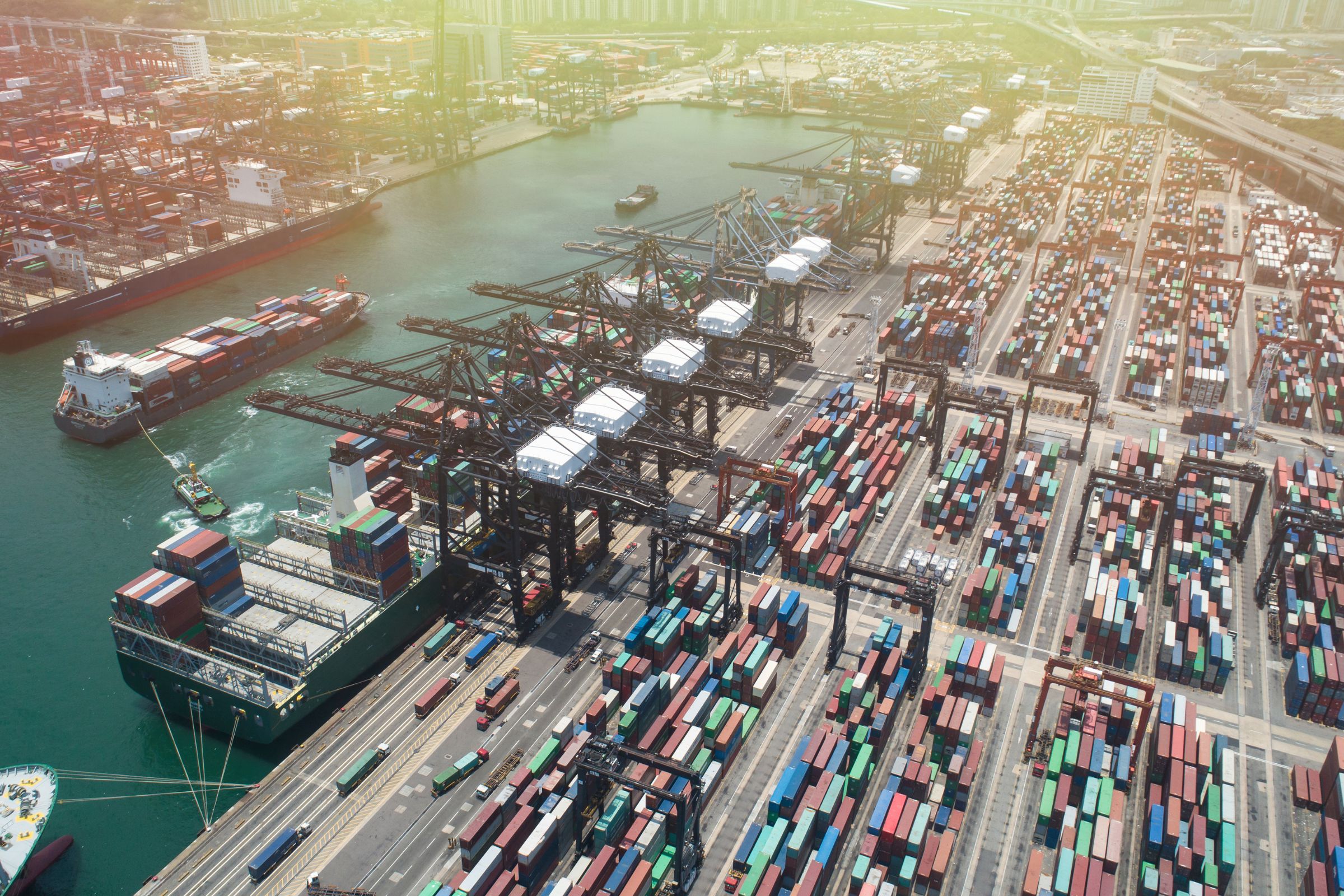Taking stock: an overview of manufacturing and the supply chain today
The last few years have presented many challenges to manufacturing and the supply chain. Companies have responded and adapted, but supply chains still face risks and pressures. In this article, you can explore the recent changes and developing trends in supply chains and consider ways to build resilience.
Supply chain trends
Covid-19 highlighted that supply chain management at companies across the globe was not as secure or resilient as many people thought. While the World Health Organisation has declared the end of the global health emergency, the impact on global supply chain management is still being felt.
For years, many companies had been taking a lean “just in time” approach to supply chain management. They ordered what they needed when they needed it. This reduced the staff and storage costs that come with excess inventory. It minimised waste. It also reduced the financial losses that occur when selling excess inventory.
However, during the pandemic, many supply chains stalled.
Excess inventory

At CCL we saw huge problems with microchips. The automotive industry, which had dominated the demand for microchips in the past, was suddenly in competition with other electronic goods. The demand for consumer electronic goods such as laptops, televisions and smart speakers soared during lockdowns and home-working. Production simply couldn’t keep up. The wait-time for parts grew.
This hugely increased the demand for excess inventory. Our clients’ parts that would normally sell for 50 cents suddenly increased in value to 50 dollars.
In efforts to improve their chances of getting the required parts as quickly as possible, supply chain managers, purchasing managers and purchasing directors placed multiple orders with different suppliers. They deliberately ordered more than they needed to mitigate their supply chain issues. This created excess inventory that’s still affecting companies today.
The pandemic demand for microchips has now calmed down and parts are generally available. We’ve seen a big shift from the “just in time” to a “just in case” buying model. Companies buy and store more inventory, even though costs have increased. These businesses understandably want to minimise supply chain risks and build resilience in the event of another supply chain crisis.
Buying and storing more inventory is an expensive business that looks set to stay for now, at least. Among supply chain managers, only a third think warehouse inventories will return to normal levels before 2024.
As well as adapting how they buy, many companies are also changing where they buy. They’re shifting their reliance on Chinese goods to parts from other countries. China’s “Zero Covid” policies saw China losing manufacturing trade to Vietnam, Malaysia, Bangladesh, India and Taiwan.
US-China chip war

Meanwhile, the current US-China “chip war” is affecting the import of microchips and microchip manufacturing equipment into China:
- Several Chinese supercomputing companies are on a restricted entity list, stopping them from buying US chips.
- The US is using the foreign direct product rule, or FDPR, to prevent China from obtaining advanced computing chips. The rule gives the US government power to stop any product being sold if it was made using American technology. And nearly all chip factories contain critical tools from US suppliers.
- Due to US sanctions, China's chip imports decreased by 27 per cent in the first two months of 2023.
- Japan and the Netherlands are reportedly finalising an agreement with the US to tighten their export controls of chip manufacturing equipment and technologies to China.
Manufacturing and supply chain risk factors

There are multiple other factors affecting supply chains inventory management. These include:
- rising inflation
- higher costs of goods and services
- a shortage of some raw materials
- natural disasters
- staff shortages
Disruption to supply chains is nothing new. Even before the pandemic, research by McKinsey & Company found that companies from a range of sectors can expect supply chain disruptions regularly. Disruptions lasting a month or longer occur every 3.7 years. The most severe of these events can have a huge financial impact.
Among our clients over the years, we’ve seen the toll that sudden catastrophic events can have on supply chains. Tragic incidents such as factory fires in Taiwan and Malaysia were devastating for the people who worked there, and had a major impact on the supply of memory ICs.
However, some suppliers have taken steps to minimise the risk posed by these kinds of events. For example, an OEM we work with in Turkey makes washing machines and TVs. They have their own fire service on the estate, ready to spring into action if the worst occurs.
Digital transformation of supply chains

Problems with supply chain data are also causing a major headache for businesses. The 2022 Annual State of Supply Management Report found that:
- The top priority for global supply chain executives in 2023 is reducing supply risk for their materials.
- The digital transformation of materials management is not a quick or easy solution. Seventy-six per cent of supply chain executives highlighted materials data held in silos and a lack of knowledge as hurdles to digital transformation.
The biggest supply chain and manufacturing challenge we’re seeing right now
Our clients' big challenge is the excess inventory they bought in 2021/2022. The supply of chips was low, and demand was high. As demand outstripped supply, the prices rose to reflect this. Now, the supply is outstripping demand.
Companies that pay high prices for inventory must now decide if they can cut their losses and sell unwanted parts at a lower price. We support these clients with Outright Buy or Consignment options for their excess inventory. Both options provide a source of revenue and help to create warehouse space.
We believe the disparity between buying and selling prices will level out in the long term, but it will take time.
Seven areas of focus to strengthen the supply chain

After more than 25 years in business, we can confirm it’s hard to predict or forecast supply chain issues in advance. But there are some steps that all companies can take to strengthen their resilience.
McKinsey & Company recommend that companies focus on seven areas to examine for vulnerabilities:
- Financial
- Regulatory
- Data security
- Structural
- Operational
- Reputational
- Organisational maturity
Businesses must build knowledge of their supply chain network (including suppliers from Tiers 1 to 3 and beyond) and the risks they may face. Only then can companies conduct a robust supply chain risk assessment. This helps to increase resilience, plan and build in contingency for whatever comes their way.
Get support with managing your excess inventory
As we’ve seen, disruption to supply chains is a constant threat, but the last few years have seen a cocktail of different factors, all causing pressure on supply chains and purchasing managers. By increasing inventory and buying stock “just in case”, many businesses are now facing rising costs and warehouse storage capacity issues.
If you have excess electronic inventory, our dedicated team offers expert support with options for Outright buy or Consignment. Get in touch today and see how we can help resolve your excess inventory issues.
11 Oct 2023
Last edited on: 02 January 2024
